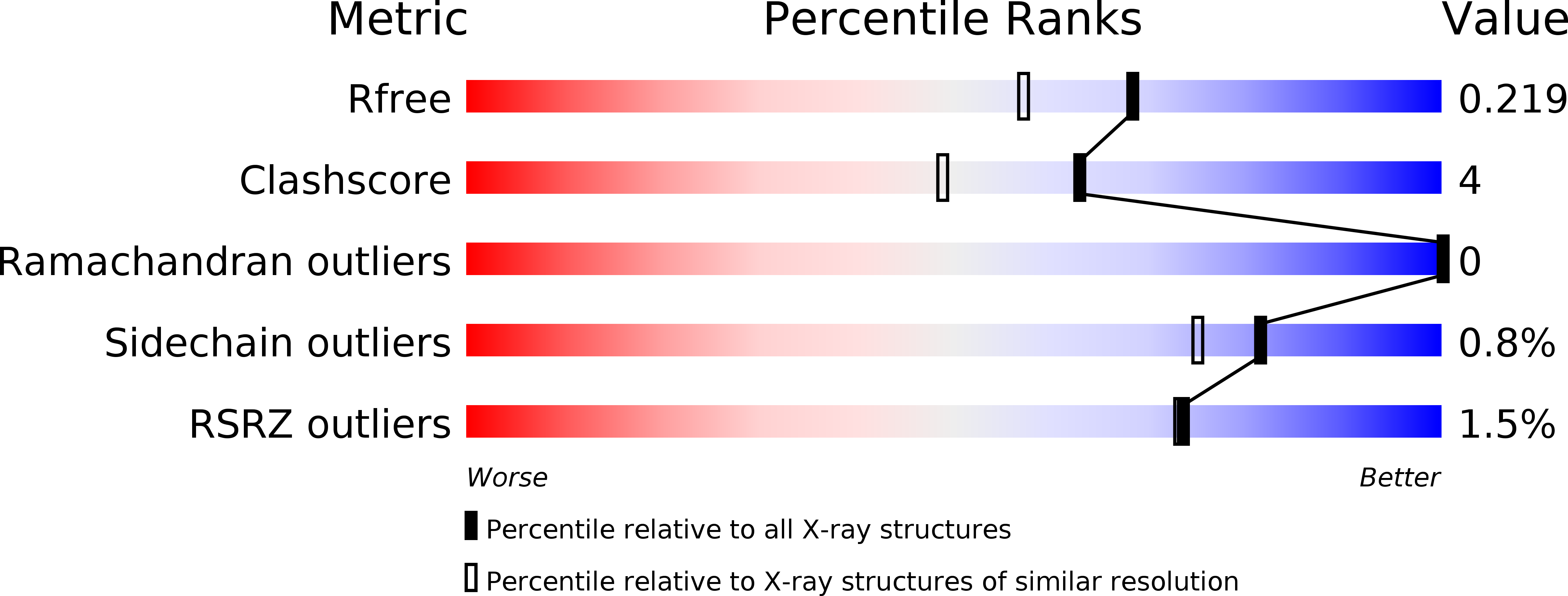
Deposition Date
2019-03-23
Release Date
2019-06-26
Last Version Date
2024-11-13
Entry Detail
PDB ID:
6OCG
Keywords:
Title:
Crystal structure of VASH1-SVBP complex bound with EpoY
Biological Source:
Source Organism:
Homo sapiens (Taxon ID: 9606)
Host Organism:
Method Details:
Experimental Method:
Resolution:
1.83 Å
R-Value Free:
0.21
R-Value Work:
0.17
R-Value Observed:
0.17
Space Group:
P 21 21 2


